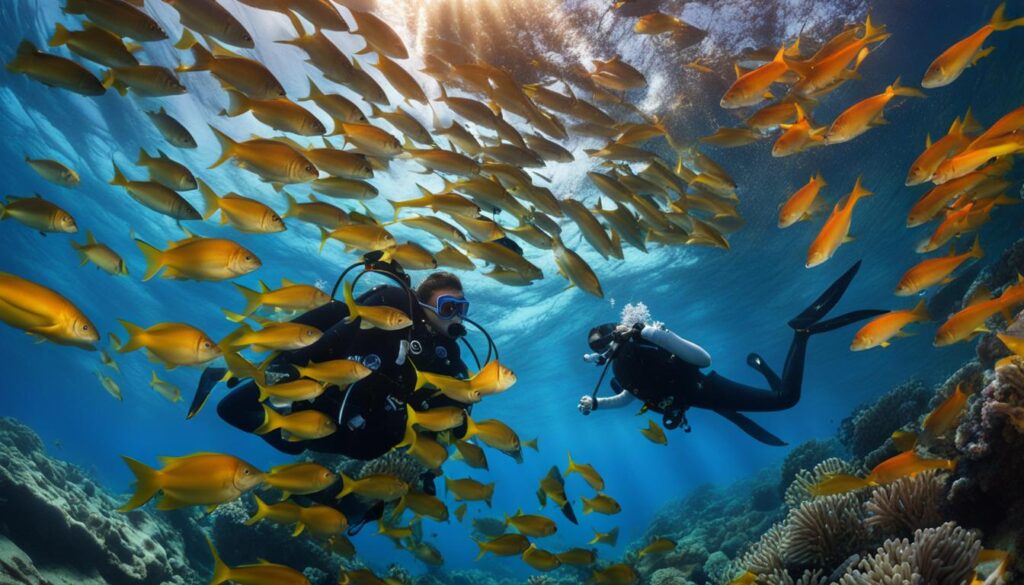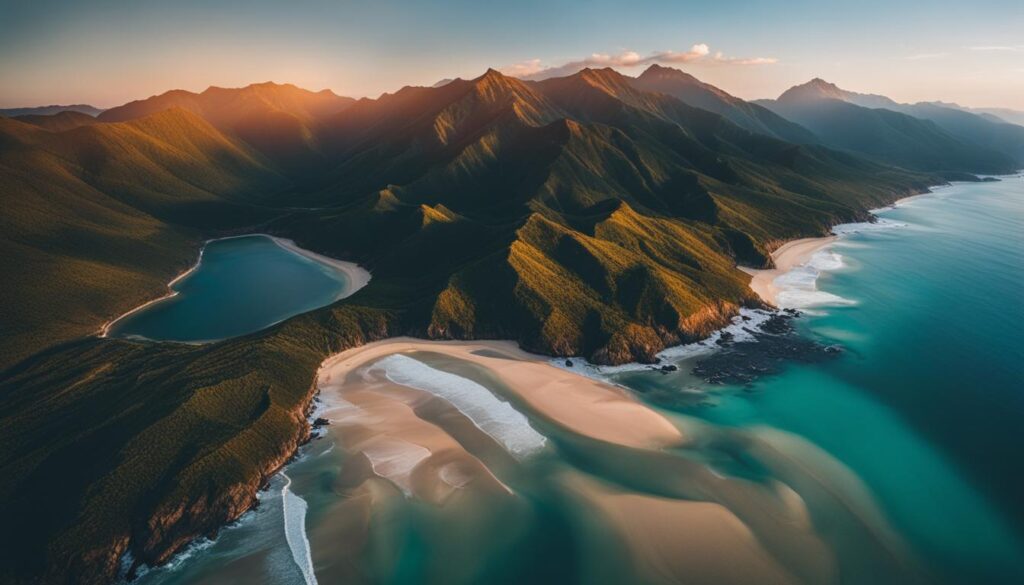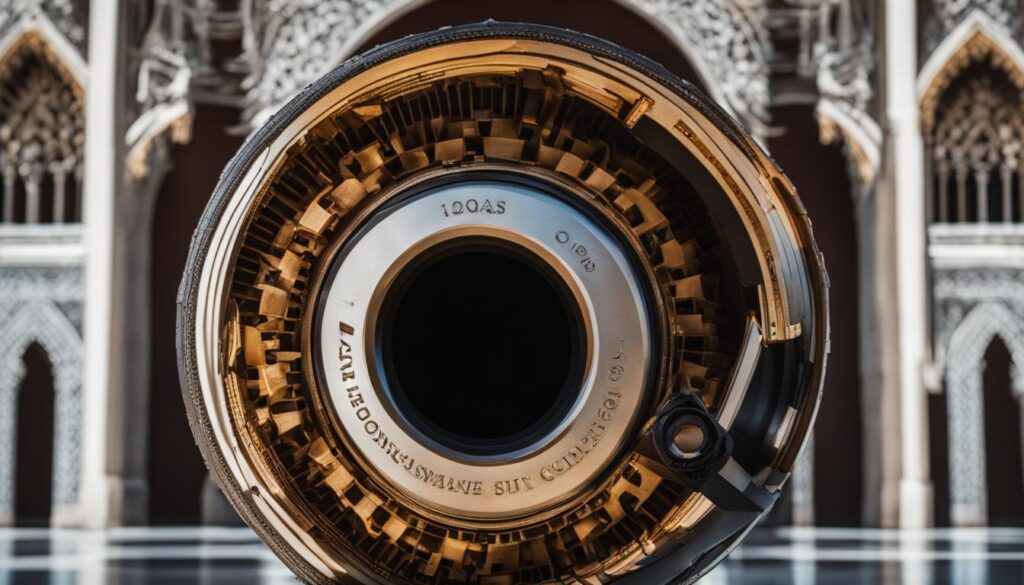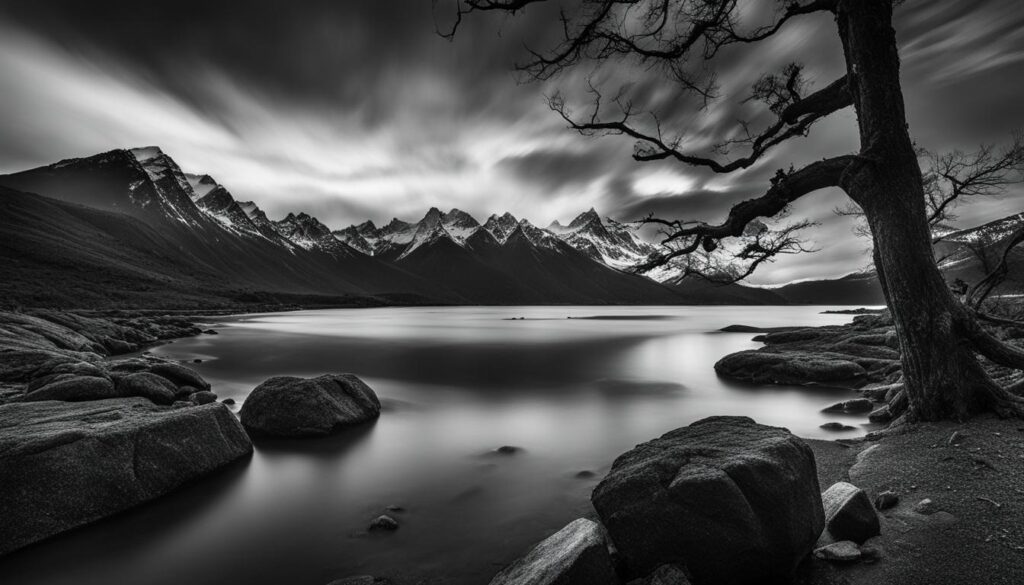We may earn money or products from the companies mentioned in this post.
Are you an avid photographer looking to explore a new and unique perspective? Look no further than underwater photography. This captivating realm allows you to capture stunning images of the underwater world and its inhabitants. With the right equipment, techniques, and creative vision, you can unlock a world of endless possibilities beneath the waves.
Underwater photography requires specialized equipment, including underwater cameras and waterproof cameras, to capture the perfect shot. These cameras are designed to withstand the unique challenges of shooting underwater and produce high-quality images. With the right gear, you can capture vibrant colors, intricate details, and the beauty of marine life that is often hidden from view.
Ready to dive in and explore the enchanting realm of underwater photography? Read on for essential tips, techniques, and gear to help you capture breathtaking images beneath the surface.
Key Takeaways:
- Underwater photography requires specialized equipment like underwater cameras and waterproof cameras
- With the right gear and techniques, you can capture stunning images of the underwater world and its inhabitants
- Underwater photography offers a new and unique perspective for capturing captivating images
- Understanding lighting, composition, and camera settings is essential for successful underwater photography
- Post-processing techniques can enhance your underwater images and help you achieve your creative vision
Tips for Successful Underwater Photography
Underwater photography presents unique challenges, but with the right techniques and equipment, you can capture stunning images that showcase the beauty of the underwater world. Here are some essential tips to get you started:
1. Understand Lighting and Composition
Light behaves differently underwater than on land, so it’s important to understand how it interacts with your subject. Use the available natural light to your advantage, and consider adjusting your camera settings to compensate for color loss at depth.
Composition is also important – experiment with different angles and perspectives to create interesting and dynamic shots. Keep in mind that shooting from below can make your subject appear more powerful and imposing.
2. Select the Right Camera Settings
Understand your camera’s unique settings, and be prepared to adjust them depending on the conditions you’re shooting in. For example, a fast shutter speed can help you capture sharp images of fast-moving marine life, while a larger aperture can create a shallow depth of field for artistic effect.
3. Use a Sturdy Tripod or Mount
Stability is key when capturing underwater images, so use a sturdy tripod or mount to keep your camera steady. This is especially important when shooting macro photography, as even the slightest movement can ruin your shot.
4. Experiment with Filters and Lenses
Filters and lenses can help you customize your shots and enhance your images. Consider using a polarizing filter to reduce glare and increase contrast, or a macro lens to capture intricate details and tiny creatures.
5. Take Care of Your Equipment
Underwater photography gear can be expensive, so take good care of it to ensure its longevity. Rinse your gear thoroughly with fresh water after every dive, and store it in a dry and safe place.
6. Practice, Practice, Practice
As with any skill, practice makes perfect. Take every opportunity to practice your underwater photography, and don’t be afraid to experiment and try new things. With time and experience, you’ll develop your own unique style and perspective.
By following these tips and techniques, you’ll be well on your way to capturing amazing underwater images. Remember to always prioritize safety and respect for the underwater environment, and have fun exploring the magical world of underwater photography.
Essential Gear for Underwater Photography
When it comes to underwater photography, having the right gear is crucial to capture stunning images. Here are some of the essential pieces of underwater photography equipment you’ll need:
| Equipment | Description |
|---|---|
| Underwater Camera | An underwater camera is specially designed to work in the water and capture stunning images. Look for a camera with a high megapixel count and a fast shutter speed for the best results. |
| Waterproof Housing | A waterproof housing is essential for protecting your camera from water damage. Make sure the housing is specifically designed for your camera model for the best fit and protection. |
| Strobe or Light | Underwater photography requires additional lighting to compensate for the loss of color and contrast as you go deeper under the water. A strobe or continuous light will help you achieve the best lighting for your images. |
| Dome Port | A dome port is a curved piece of glass that sits over the front of your camera housing. It helps to correct distortion and refraction caused by the water, resulting in clearer and more accurate images. |
| Wet Lenses | Wet lenses are additional lenses that can be attached to the front of your camera housing. They allow you to get closer to your subject or capture wider angles, depending on the type of lens you choose. |
Investing in the best underwater camera and equipment you can afford will make a noticeable difference in the quality of your images. Some of the best underwater cameras currently on the market include the Canon G7 X Mark II and the Olympus TG-5.
Exploring Unique Underwater Photography Subjects
The underwater world is full of unique and fascinating subjects that make for captivating images. Whether you’re an experienced photographer or a beginner, capturing the beauty of marine life is always an exciting and rewarding experience.
Marine Life Photography
One of the most popular and rewarding subjects in underwater photography is marine life. From colorful tropical fish and vibrant coral reefs to majestic sea turtles and mysterious sharks, the ocean is teeming with diverse and exotic creatures that offer endless opportunities for stunning images.
When photographing marine life, it’s important to respect their natural environment and behavior. Always maintain a safe distance and avoid touching or disturbing any animals or plants. Use a fast shutter speed and burst mode to capture sharp and precise images of moving marine life.
Shipwrecks and Underwater Caves
Exploring the eerie and haunting beauty of shipwrecks and underwater caves is another fascinating subject for underwater photography. These unique environments offer a glimpse into the history and mystery of the underwater world.
When photographing shipwrecks and underwater caves, lighting is key. Use external strobes or video lights to illuminate the scene and create a dramatic and captivating image. Experiment with different angles and perspectives to capture the full essence of the subject.
Abstract and Artistic Underwater Photography
Underwater photography also offers a canvas for artistic expression and abstract imagery. Capturing the movement, patterns, and colors of the underwater world can result in beautiful and unique abstract images.
Experiment with slow shutter speeds and deliberate camera movement to create artistic images that evoke emotion and imagination. Look for interesting textures, lines, and shapes in the underwater environment to create a visually appealing composition.
Tips for Captivating Underwater Portraits
Underwater portrait photography provides a unique and captivating perspective that can create mesmerizing images. Here are some tips to help you capture stunning underwater portraits:
- Choose the Right Model: The right model can bring your underwater portrait to life. Look for a model who is comfortable underwater and has experience posing for photos.
- Select the Right Environment: The environment you choose can add depth and character to your portrait. Consider shooting in a shipwreck or near a vibrant coral reef.
- Master Lighting: Lighting is crucial in underwater photography. Experiment with different angles and techniques to create striking silhouettes and shadows.
- Use Props: Props can add interest to your portrait and create an engaging story. Consider using a mermaid tail or underwater accessories.
- Experiment with Compositions: Unique compositions can make your underwater portrait stand out. Try different angles and positions to create an intriguing and dynamic image.
- Work on Communication: Communication is key when working with a model underwater. Use hand signals and pre-planned poses to ensure a successful shoot.
Remember to be patient and have fun while shooting underwater portraits. With practice and creativity, you can capture captivating images that tell a story and evoke emotion.
Mastering Macro Photography in the Underwater World
Macro photography allows you to capture the intricate details of tiny subjects underwater. Here are some tips to help you master macro photography in the underwater world.
Selecting the Right Macro Lens
The first step to mastering macro photography underwater is selecting the right macro lens. Look for a lens with a higher magnification, such as 100mm or 105mm, to capture the smallest details. Additionally, consider a lens with a wider aperture to create a shallow depth of field and blur the background, which will make your subject stand out.
Shooting Techniques
When shooting macro underwater, it is crucial to shoot steady and keep the camera close to the subject. Use a tripod or a stable surface to keep the camera steady, and get as close to your subject as possible without disturbing it. Additionally, use manual focus to ensure your subject is in focus.
Lighting and Exposure
Lighting is key to capturing stunning macro images underwater. Use a strobe or a video light to add light to your subject and avoid harsh shadows. Additionally, consider adjusting your exposure settings to bring out the colors and details in your subject.
Capturing the Right Subjects
Look for small subjects with interesting textures and patterns, such as nudibranchs, shrimp, or crab. Additionally, consider capturing subjects in their natural habitat, such as amidst coral or sea grass.
Post-Processing Techniques
Post-processing can enhance the details and colors in your macro images. Use editing software to adjust the exposure, contrast, and sharpness of your images. Consider removing backscatter and other distractions from the background to make your subject stand out.
Mastering macro photography underwater takes practice and patience. With these tips and the right gear, you can capture stunning images of the tiny creatures that inhabit the underwater world.
Enhancing Your Underwater Photography with Post-Processing
Once you’ve captured your stunning underwater images, it’s time to enhance them with post-processing. With the right techniques, you can bring out the vivid colors, remove backscatter, and create truly mesmerizing images that showcase the beauty beneath the waves. Here are some tips for post-processing your underwater photography:
Adjust Colors
Water absorbs colors differently than air, which can result in muted and washed-out tones in your underwater photos. Use software like Adobe Lightroom or Photoshop to adjust the colors and contrast of your images to make them more vibrant and visually appealing.
Remove Backscatter
Backscatter is when light reflects off particles in the water and creates white or hazy spots in your images. Use the clone stamp or healing brush tools in post-processing software to remove these distractions and create a clear and stunning image.
Retouching
Retouching allows you to remove unwanted objects or distractions from your images. You can also use this technique to enhance and highlight specific areas of your photo. Use the spot removal tool to remove spots, bubbles, or other unwanted elements in your photo.
TIP: Be careful not to overdo it with retouching, as it can make your photos look unrealistic and artificial.
Sharpening
Underwater photos can sometimes appear soft or blurry due to the water’s natural movement. Use the sharpening tool to add clarity and sharpen the details in your photo.
With these post-processing techniques, you can create stunning, eye-catching images that capture the beauty of the underwater world. Don’t be afraid to experiment with different techniques and find your own unique style of underwater photography.
Conclusion
Underwater photography is a fascinating and rewarding pursuit that offers a unique perspective on the world beneath the waves. With the right gear and techniques, you can capture stunning images that showcase the beauty and diversity of marine life and the underwater environment.
Remember to Respect the Ocean
While exploring the underwater world, it’s important to remember to respect the ocean and its inhabitants. Always follow local regulations and guidelines, never disturb marine life, and avoid damaging coral reefs or other delicate ecosystems.
Take Your Time and Have Fun
Above all, enjoy the experience of underwater photography and take your time to explore and experiment. With practice and persistence, you’ll be able to capture truly breathtaking images that showcase the magic of the underwater world.
So why wait? Grab your camera, don your wetsuit, and dive into the enchanting realm of underwater photography today!
FAQ
Can I use a regular camera for underwater photography?
No, regular cameras are not designed to withstand the underwater environment. You will need to invest in an underwater camera or a waterproof camera that is specifically designed for underwater photography.
What equipment do I need for underwater photography?
In addition to an underwater camera or waterproof camera, you will need a waterproof housing to protect the camera, underwater strobes or lights for proper illumination, and possibly additional lenses or filters depending on your specific photography goals.
How do I choose the right underwater camera?
When selecting an underwater camera, consider factors such as image quality, depth rating, ease of use, and compatibility with your desired accessories. Research and compare different models to find one that suits your needs and budget.
What are some tips for successful underwater photography?
Understanding lighting and composition, shooting in RAW format, adjusting white balance, and experimenting with different angles are some essential tips for underwater photography. It’s also important to practice good buoyancy control and respect the marine environment.
Can I take underwater portraits with my underwater camera?
Yes, you can capture stunning underwater portraits with the right techniques. Working with models, mastering buoyancy control, and creating compelling compositions are key factors in capturing mesmerizing underwater portraits.
How can I capture macro photography underwater?
Macro photography underwater requires specialized techniques and equipment. Investing in a macro lens and mastering techniques such as proper focus, lighting, and subject selection will help you capture detailed and captivating macro shots beneath the waves.
How can I enhance my underwater images through post-processing?
Post-processing is an essential step in enhancing underwater images. Techniques such as adjusting colors, reducing backscatter, and retouching can help bring out the beauty of the underwater world in your photographs.
What subjects can I explore in underwater photography?
The underwater world offers a vast array of subjects to explore, including vibrant coral reefs, exotic marine life, shipwrecks, and underwater caves. Let your creativity guide you and capture the unique beauty that lies beneath the surface.
Affiliate Disclosure: This post may contain affiliate links. If you purchase through our link, we may receive a small commission, but at no additional cost to you. For more information, please see our Disclosure statement.



